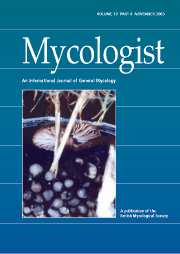No CrossRef data available.
Article contents
Understanding what makes cells tick: prize-winning lessons from simple fungi
Published online by Cambridge University Press: 17 September 2002
Abstract
In October 2001, Sir Paul Nurse and Dr Tim Hunt of the Imperial Cancer Research Fund became the first Britons since 1988 to win the Nobel prize for Physiology or Medicine. The prize was shared with Dr Leland Hartwell, director of the Fred Hutchinson Cancer Research Center in Seattle, and acknowledged the extraordinary progress made by the three scientists in identifying the molecules that orchestrate the growth and division of cells. Two British scientists winning a Nobel prize is reason enough to celebrate, but what made this achievement particularly pleasing was that many of the key experiments were carried out in fungi.
In the early 1970's, Hartwell recognised the potential for studying the cell cycle with genetic methods, using as his model the baker's yeast, Saccharomyces cerevisiae (Hartwell, Culotti & Reid, 1970). He isolated yeast cells in which genes controlling the cell cycle were mutated and thereby identified over 100 "CDC" (cell division cycle) genes. One of these (CDC28) was shown to control a key step in the progression from G1 to S-phase, a point known as 'Start' (Fig 1). Inspired by Hartwell's work, Paul Nurse took a similar approach using another fungal model, the fission yeast Schizosaccharomyces pombe (Nurse, Thuriaux & Nasmyth, 1976). In the mid-1970's, he showed that a gene dubbed cdc2 had a key function in controlling the transition from G2 to M-phase. DNA sequencing of the gene revealed that cdc2 was very similar to the CDC28 gene that Hartwell had shown to control the transition through Start. In other words, a single gene regulates progression through two key points in the cell cycle in organisms that separated from each other during evolution more than one billion years ago.
Information
- Type
- Original Article
- Information
- Copyright
- © 2002 Cambridge University Press

